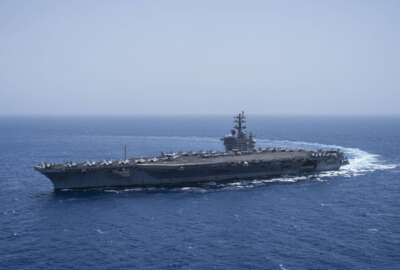VTC : Vital to CECOM’s Everyday Support For Warfighters
CECOM Life Cycle Management Command (LCMC) is part of Army Materiel Command (AMC). Lately, it\'s been on the move-- and supported more than ever by video...
CECOM Life Cycle Management Command (LCMC) is part of Army Materiel Command (AMC). Lately, it’s been on the move– and supported more than ever by video teleconferencing.
Since 2008, CECOM been making a massive migration of its headquarters from Ft Monmouth, NJ to Aberdeen Proving Ground (APG). VTC is critical for CECOM to stay connected with its 8,500-strong team — including both the 50% of that team based outside HQ or forward deployed, supporting seven regional Army field support brigades as well as warfighting units in the field.
“For the last 2-3 years, video teleconferencing has enabled us to operate effectively in a ‘split-based operation’ during the BRAC transition,” said Ed Thomas, Deputy to the Commanding General, CECOM. “And it gives us this amazing connection from APG right to the front lines of the battlefield.”
New location means new equipment. By the end of 2011, CECOM will have VTC conferencing hardwired into 13 conference rooms at APG. “The gear being installed by CACI will be IP based with ISDN as a backup capability. In addition, we will USE Defense Connect On-Line and Microsoft Communication Software for desktop VTC capability,” said Patricia O’Connor, CIO for CECOM LCMC. “VTC supports a more effective exchange of information that means faster turnaround for mission support.”
CECOM participates in three major weekly VTC meetings. First, there’s a CECOM worldwide operations update, to review the work we’re doing in support of the warfighter, and track the supply and maintenance issues.
Second, AMC holds its weekly VTC across 30-40 nodes including seven regional support commands, along with subordinate commands like CECOM and its counterparts in aviation, missiles and tanks. The third is the weekly depot maintenance production reviews — a big part of making sure equipment get overhauled and back to the troops.
“After there’s an improvised explosive device (IED) attack, it’s important for us to see what happened to the vehicle that was attacked and how the IED was detonated. Our engineers and scientists can get a better understanding of the operational needs and valuable information to engineer better solutions,” said Thomas.
“We also use VTC within CECOM for General Strong’s staff calls, to connect our people at Tobyhanna, PA, Ft Monmouth, Ft Hood, Ft Huachuca, and Ft Belvoir. There’s clear cost savings associated with it; often we’re able to effectively conduct a meeting or conference without having to travel.”
Copyright © 2024 Federal News Network. All rights reserved. This website is not intended for users located within the European Economic Area.





